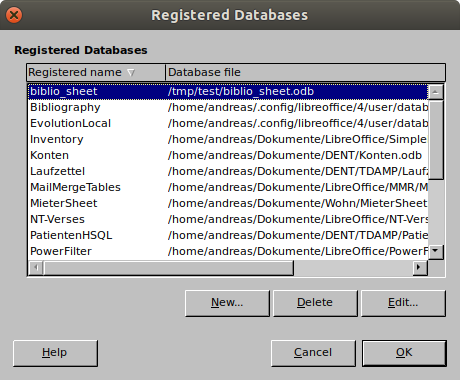LO 7.5.3.2, Fedora 38 (linux), KDE Plasma desktop (Qt widgets)
I want to use a spreadsheet as bibliography source instead of the built-in DB.
What I did with success:
- change data source to the spreadsheet with
Edit>Exchange Database - point the bibliography to this spreadsheet with
Tools>Bibliography Database- switch to the spreadsheet with Data Source button
- associate bibligraphy fields with spreadsheet columns through Column Arrangement button
At this point, the bibliography is correctly displayed and I can also edit the rows.
Back to the Writer document, I want to insert a bibliography entry Insert>TOC & Index>Bibliography Entry, but in the dialog the Short name menu is empty. Apparently the link between Writer and this spreadsheet bibliography is not effective though Base (if it is this application in charge of management) correctly displays everything.
Is there a limitation in the Bibliography feature? Have I missed a step?

